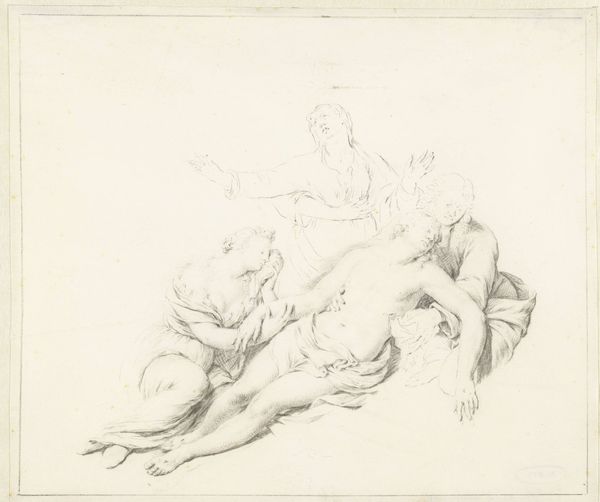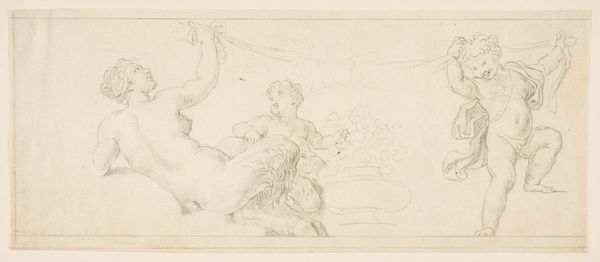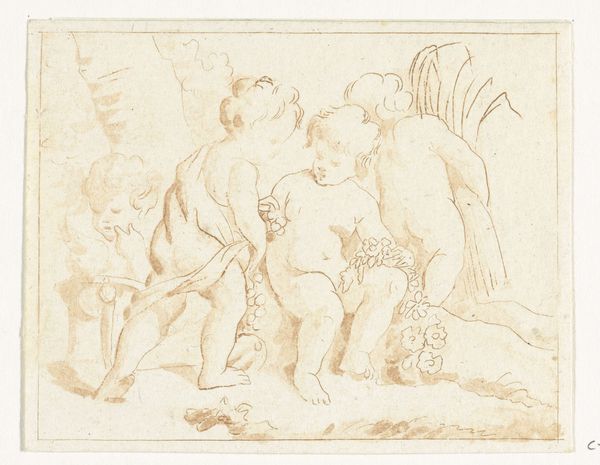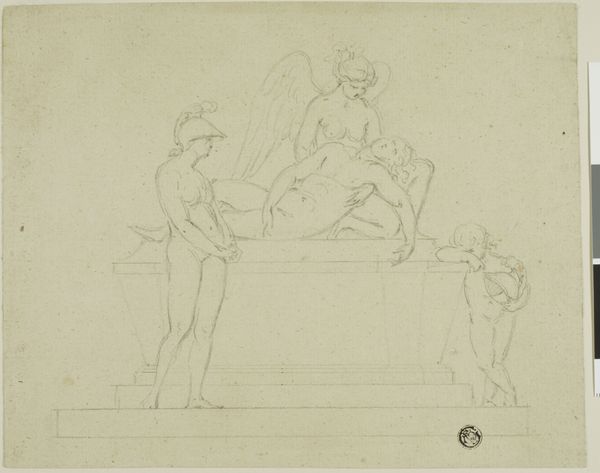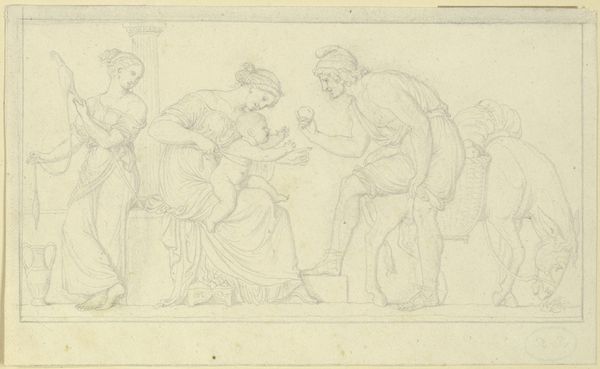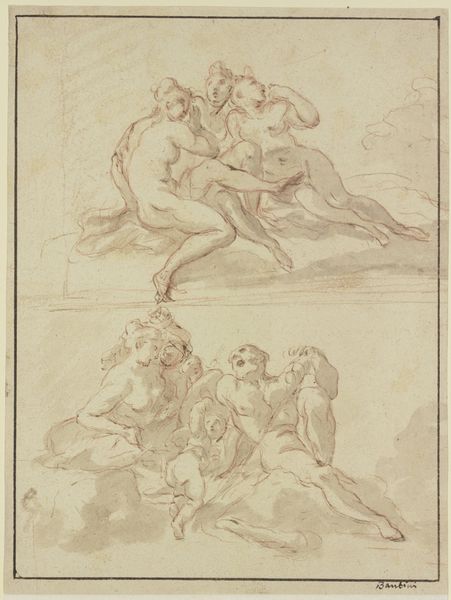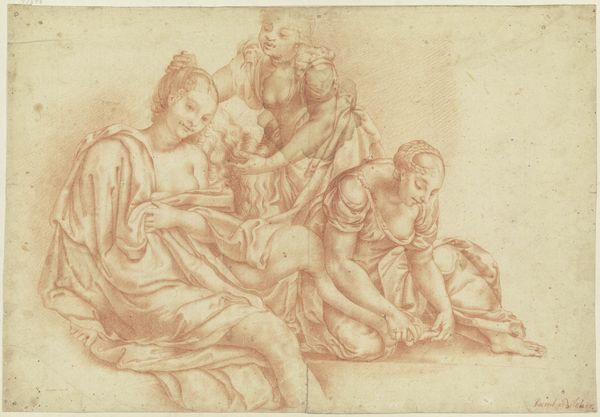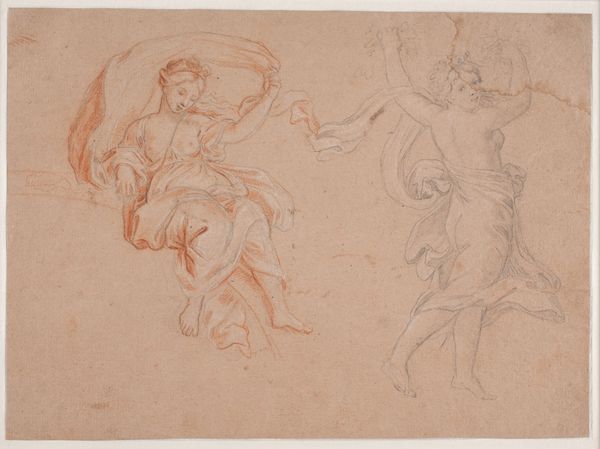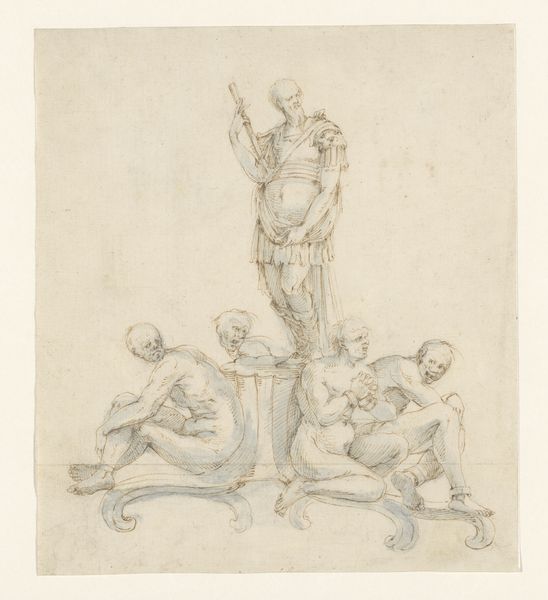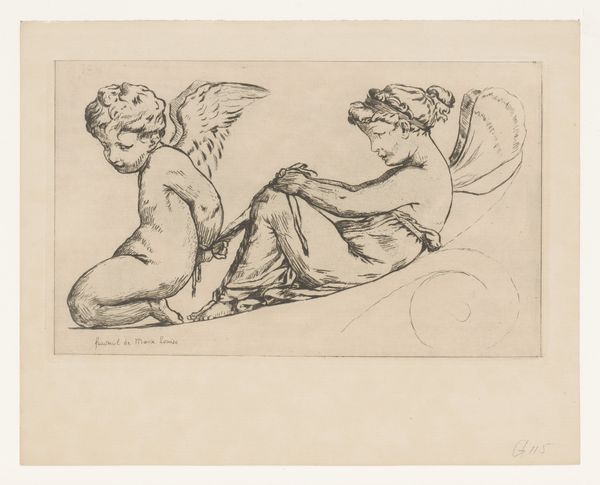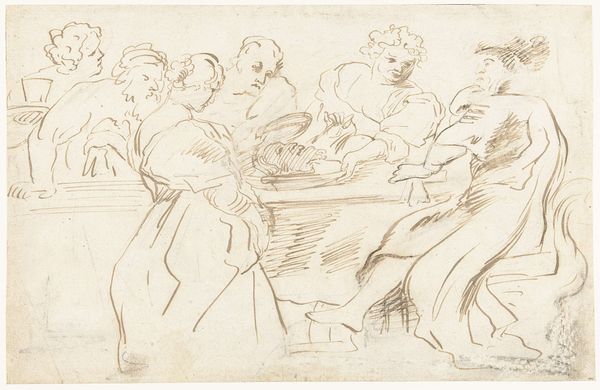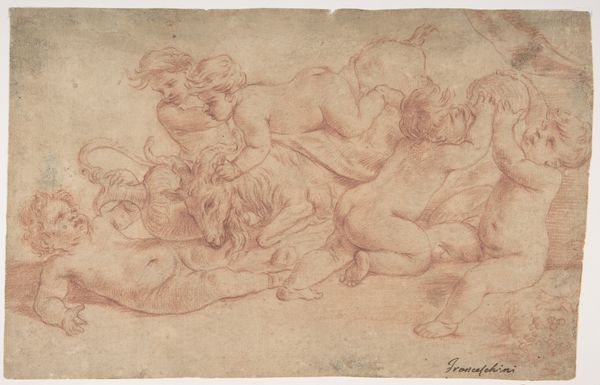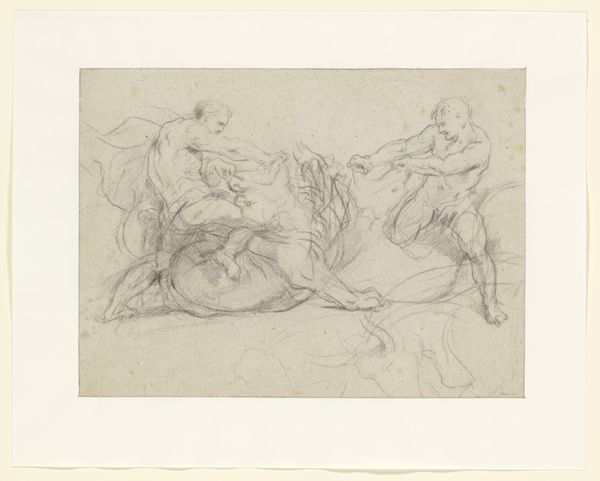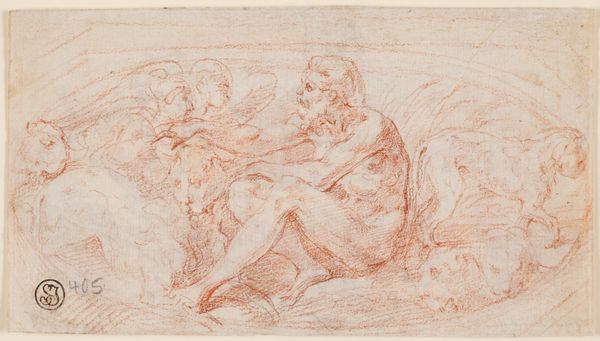
drawing, paper, pencil
#
drawing
#
allegory
#
classical-realism
#
figuration
#
paper
#
pencil drawing
#
pencil
#
line
#
history-painting
#
academic-art
#
nude
Dimensions: sheet: 5 1/16 x 11 1/16 in. (12.8 x 28.1 cm)
Copyright: Public Domain
Curator: Look at this intriguing study, "Design for a Frieze," from around the 18th century. It's currently housed here at The Met. Created with pencil on paper, it presents an allegory in the classical-realist style. What catches your eye? Editor: Well, initially, it strikes me as…dreamlike. Ethereal. The figures seem to float, caught between form and the absence of it. Makes me want to touch it, see if my fingers go right through! There’s something fragile, yet monumental, about that paradox. Curator: That tension between fragility and monumentality speaks to the function of such a drawing. Architectural friezes were significant signifiers of status, intended to convey messages about the patron’s power and taste through historical or allegorical references. Editor: It’s funny, knowing that makes me feel a bit…restricted. Like I should decode it rather than feel it. But those soft, almost indistinct lines…they still whisper of something more human. The weight of the adult figure contrasted with the playful, nearly weightless cupid, and another toddler. What do you think? Curator: Precisely. Academic art of this period utilized such allegories to create layers of meaning accessible to those familiar with classical literature and mythology, to reinforce particular narratives about social structures or moral virtues for public consumption. Editor: Hmm, I keep coming back to the medium. Just pencil on paper! So unassuming. Knowing the frieze, if it was built, would've been massive. I find that contrast very potent, don’t you think? It’s like the drawing holds the potential for something huge, hiding within a fragile shell. The hand sketching and the end construction were so different. Curator: And it reveals the role of drawings in the artistic process during that era. They served as crucial preparatory tools—as a conduit between the artist's initial vision and the final, often grand, manifestation of that vision. Editor: So, more than just planning and getting approval. It’s a conversation on a whole different plane...between intention and what exists, right there in pencil. Curator: Precisely, and viewed through a social and art-historical lens, "Design for a Frieze" offers a rich opportunity to appreciate that conversation within the broader contexts of power, patronage, and the politics of visual representation during its time. Editor: Well, you've definitely given me a whole other perspective to see it through! Maybe there's no contradiction; instead, the key is just accepting that multiplicity of expression.
Comments
No comments
Be the first to comment and join the conversation on the ultimate creative platform.
